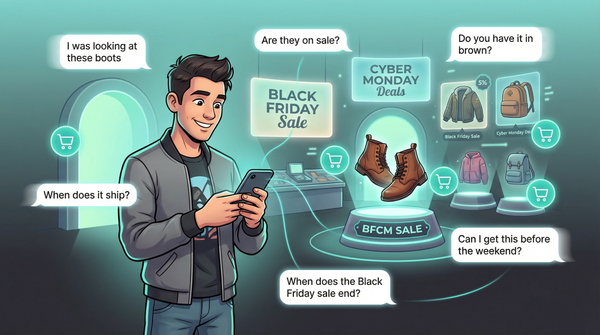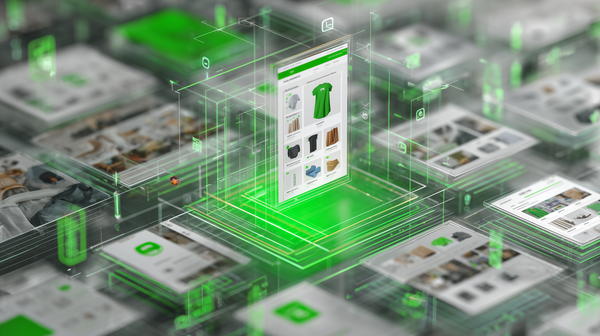AI Shopping Assistants Arrive: ChatGPT Comes to Shopify Stores

Shopify merchants are facing a new reality: AI shopping assistants are no longer hype—they’re here. OpenAI has launched a built-in shopping feature in ChatGPT, enabling users to discover, compare, and even purchase products directly through chat. For Shopify’s millions of DTC brands, ChatGPT is poised to become a powerful new storefront (LinkedIn). Here’s what’s changing—and how DTC operators can get ahead.

ChatGPT Steps Into E-Commerce
OpenAI’s latest update transforms ChatGPT into a shopping search engine. Users can now ask for product recommendations and get visual results—images, prices, reviews, and direct purchase links—right in the chat window (LinkedIn).
Unlike traditional search, these results are ad-free and unsponsored—“no ads. No bias. Just real recommendations,” as one AI founder put it (LinkedIn). The feature is rolling out globally to all ChatGPT users—including those not logged in—and currently covers major categories like fashion, beauty, home goods, and electronics.

Early demos show ChatGPT returning a carousel of curated product options for queries like “a good gift for a new parent under $50”—complete with images, descriptions, and clickable links. Clicking a product opens a side panel with more details, including customer reviews (Direct to Consumer).
The chatbot can refine results in real time, acting as a personal shopping assistant with tailored suggestions and “buy” buttons (Direct to Consumer). The goal: simplify decision-making by keeping everything in one conversational flow.
Data Point: ChatGPT’s search tool is already seeing massive traction, with over 1 billion searches last week alone (LinkedIn). All product results are currently organic—not paid ads. ChatGPT is positioning itself as an AI-driven product discovery engine—one that could disrupt how consumers search and shop online.
The Shopify–OpenAI Partnership: What’s Under the Hood?
Behind the scenes, OpenAI and Shopify have been collaborating to power this new shopping experience. Developers have uncovered code in ChatGPT referencing "buy_now" buttons, product info fields, and a "shopify_checkout_url"—clear signals that a native Shopify checkout integration is in the works (Testing Catalog). Soon, ChatGPT could hand off orders directly to a Shopify store’s secure checkout, enabling end-to-end transactions inside the chat.
Currently, clicking “View” on a ChatGPT product recommendation opens the retailer’s website for checkout (Medium). But the code hints at a near-future update where a “Buy Now” button will trigger Shopify’s checkout flow directly within ChatGPT (Stryde). In effect, ChatGPT could become a full-fledged sales channel for Shopify merchants, exposing them to a user base that may reach up to 1 billion (LinkedIn).
Industry Commentary: “No redirects. No search. Just chat, compare, and buy in one flow… If this happens, Google, TikTok, even product pages as we know them are all about to change,” notes one e-commerce analyst (ClickZ).
Shopify is betting big on AI-first commerce. In an April memo, CEO Tobi Lütke urged teams to “hire an AI before you hire a human,” underscoring Shopify’s commitment to embedding AI across its platform (Testing Catalog). Shopify Magic (for content generation) and Sidekick (an AI assistant for merchants) are already live, and the OpenAI partnership fits its vision of “agentic commerce.”
Meanwhile, competitors are moving fast: Microsoft has launched a Copilot Merchant Program, and Amazon is testing “Buy With Alexa” (LinkedIn). Shopify clearly intends to lead, not follow, as shopping shifts to AI-driven channels.
Rethinking the DTC Customer Journey
For DTC brands, ChatGPT’s shopping assistant could reshape the customer journey. Traditionally, a customer might discover your brand via Google or social, visit your Shopify store, and then purchase.
Now, the path could be: ask ChatGPT for a recommendation, discover your product, and buy—all without ever visiting your website (The DTC Insider). As Brian Roisentul of The DTC Insider puts it: “Find you on ChatGPT ➜ Choose deal ➜ Buy. Your website is not in the purchase path anymore.”
But don’t panic—this won’t replace DTC sites overnight. Only about 8% of product discovery currently comes from search engines (KnoCommerce survey via The DTC Insider), with most discovery still happening via social and word-of-mouth. In the short term, ChatGPT’s impact will be most significant for that search-driven slice.
But if more shoppers begin skipping search engines for AI assistants, the balance could shift. Smart DTC operators are treating this as a new channel to optimize—not a threat to fear.
Conversational shopping offers a more personalized, high-intent experience. Shoppers are telling the AI exactly what they want (“a minimalist running shoe under $100”), and if your product matches, you could see faster conversions. It’s SEO meets personal shopping. The tradeoff? Brands may lose some control over storytelling and user experience, as the AI condenses your product down to the essentials—title, specs, price, and a few review highlights.
“There’s definitely a concern about becoming just a ‘data source’ for AI rather than delivering a branded experience,” one DTC operator shared on LinkedIn. But many see the upside: “If ChatGPT can put my products in front of new customers 24/7, I want to be there,” said a mid-size apparel founder. The key: prepare your brand’s data and strategy so you show up in these AI-driven interactions.
How Shopify Brands Can Win With AI Shopping
If ChatGPT and similar tools are the new e-commerce discovery channels, how can Shopify brands adapt?
1. Optimize Your Structured Data.
ChatGPT’s recommendations rely on structured data—especially schema markup and product feeds like your site’s JSON-LD (Direct to Consumer). Ensure your product pages include all critical fields: name, price, description, images, and stock. If you’re missing standard schema, your products might be invisible to the AI.
2. Keep Data Accurate and Fresh.
ChatGPT will display live pricing and availability when possible. If your metadata says $89 but your site shows $109, the AI may skip your listing (Direct to Consumer). Use inventory tracking, update your sitemap, and reflect all changes in your structured data immediately.
3. Focus on Content Quality and Semantic Relevance.
ChatGPT doesn’t just match keywords—it interprets meaning. It reads your product descriptions, reviews, FAQs, and more to understand what problems your product solves (Direct to Consumer). If your reviews mention “lasted through a thunderstorm” or “fits in overhead bins,” those differentiators can help you surface for relevant queries. Monitor and optimize your reviews and Q&A—the language there could be what the AI uses to recommend you.
Pro Tip: Audit your product pages with an “AI lens.” Do you have all the basics (price, specs, availability) in structured data? Would an AI understand your product’s value and target customer from your copy and reviews? If not, update now. As one DTC newsletter put it: “Make sure your product feed speaks fluent robot—so ChatGPT can sell for you, 24/7” (Direct to Consumer).
4. Watch for Shopify’s Official ChatGPT Integration.
Rumors suggest Shopify will soon launch a ChatGPT sales channel app (Direct to Consumer). This would let you plug your catalog directly into ChatGPT, bypassing web crawling. When it drops, opt in early. Subscribe to Shopify’s product updates and developer blogs to stay ahead.
The Bottom Line for DTC Brands
AI shopping assistants are here. ChatGPT is already showing products to consumers, and in-chat checkout is coming soon. For Shopify brands, this is a call to action: treat AI-driven discovery as a new marketing channel. Clean data, authentic reviews, and agile adoption of new tools will help you win. The brands that adapt early will shape the future of conversational commerce.
At the end of the day, the goal hasn’t changed: get your product in front of the right customer, at the right moment. Now, those moments are happening inside AI chat interfaces. Optimize your store for AI discovery, stay alert to new features, and you’ll turn ChatGPT’s arrival into an opportunity—another way to reach customers and drive sales, powered by the latest technology.
Subscribe for weekly DTC insights.






